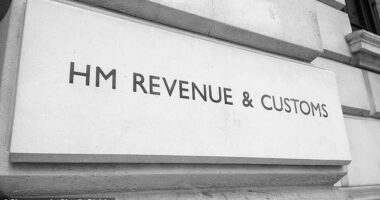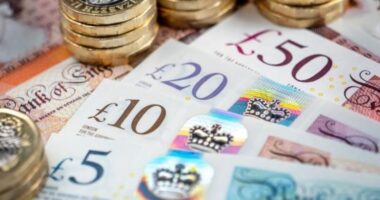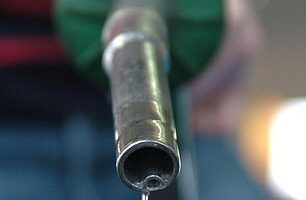MILLIONS of self-employed Brits will be handed a financial lifeline from the self-employment grant.
The Chancellor Rishi Sunak will unveil more details about the scheme in his Budget on March 3 – including who’s eligible and how much it’s worth.
? Read our Budget 2021 live blog for the latest news & updates
Mr Sunak has said already there will be a fourth grant covering lost earnings through February, March and April as a result of coronavirus.
Like the previous payouts, the grants will be part of the self-employment income support scheme (SEISS).
The latest grant will be worth up to 80 per cent of average monthly profits up to a maximum of £2,500 a month.
The Chancellor will also confirm that there will be a fifth grant.
There will also be extra help for 600,000 newly self-employed.
It’s likely the cash payouts will only be available to workers who meet a certain criteria to acknowledge that some businesses will have had to stay shut through the third national lockdown.
For now, here’s everything we know about the fourth SEISS grant so far:
When does the fourth grant come into effect?
The Government confirmed last year that there would be a fourth SEISS grant to cover February to April.
The announcement came after Sunak revealed that self-employed workers would be given a third SEISS grant that offered support from November to January.
Exact details about the fourth grant will be announced in Sunak’s budget speech on March 3.
So far, we know the fourth grant will be worth £7,500.
He is also expected to confirm a fifth payment for self-employed workers as well.
The Chancellor will reveal that hundreds of thousands of people, many of whom became self-employed in 2019-20, will now be able to claim direct cash grants under the Self-Employment Income Support Scheme.
Anyone who filled in a tax return in January – or is due to – will be able to get the extra help.
And there will be another grant over the summer too as the support package for millions of people continues.
2.7million self-employed people have got access to help so far, and this will take the total to more than 3.3 million.
How much will the fourth grant be?
It means they will be able to access the £7,500 in extra help that others have been able to claim.
Martin Lewis from MoneySavingExpert says further details on how much will be paid out will not be announced until the Budget on March 3.
In a video posted to Twitter last month, Lewis went on to criticise the delay in the announcement and called on politicians to put pressure on the government to bring it forward.
He said: “For me, it does seem to be unnecessary cruel to make people who are in dire financial need of support in the midst of this horrible coronavirus pandemic, wait on tenterhooks to see what kind of money they are going to get.”
The third SEISS grant covered 80% of self-employed workers’ earnings – or up to £7,500 – for the three months from November to January.
Since the furlough scheme was extended until April 30 and is still paying 80% of employees wages, it is unlikely Sunak will reduce the amount people will get until the end of April in the fourth SEISS.
Mr Sunak will also reveal in today’s Budget:
Why has the fourth grant announcement been delayed?
It is not clear why the Government is taking longer to unveil details on the fourth grant.
But Martin Lewis said the delay could be down to operational changes being made to the fourth grant.
The money expert said he hopes this is because the Treasury is trying to cover more people this time round, which is something many people have been calling for.
It’s not clear when self-employed workers will be able to claim the cash but applications could open in the coming days.
It’s likely the cash payouts will only be available to workers who meet a certain criteria to acknowledge that some businesses will have had to stay shut through the third national lockdown.
Will the delay affect when I get paid?
Again, the Government have kept silent on why they have yet to unveil the details.
But Mr Lewis said they delay to the announcement may not affect when people get their money.
This is because applications for the fourth grant could open soon after the Budget announcements are made.
For the first three grants, applications did not open until weeks into the period that the grant covered.
For example, applications for the second grant opened for applications on August 17 despite it covering the three-month period from July 14.
This means that people will not necessarily receive their fourth grant money any later than they did relative to the previous grants, Lewis explained.
However, the difference in the past is that people knew in advance how much they would get and who would get it.
Martin Lewis said the delay “stops them planning, stops them budgeting, stops them having legitimate expectations.”
He added that “managing expectations in this time is absolutely crucial.”
How could eligibility change for the fourth grant?
Up to three million self-employed workers were not eligible for the first three grants.
Self-employed workers who are company directors or run their businesses as limited companies were also unable to apply.
When the self-employment scheme was launched, the Treasury said the help was based on tax returns for 2018-2019, the most recent year for which data was available.
They said it wasn’t possible for the newly self-employed to qualify, and said it could open up the system to fraud.
But now this data is available, it means hundreds of thousands more people will be eligible for the extra help.
Who was eligible for the third SEISS grant?
While the eligibility criteria for SEISS grants have changed since March last year, self-employed workers have always had to meet a stringent set of criteria to be eligible for the payout.
For the most recent grant, you had to meet the following criteria:
- Self-employed workers must have been eligible for the first and second grant – even if you didn’t claim them. (This is with the exception of some people who became eligible after a couple of rule changes in August.)
- You needed to declare that you intended to continue trading and that you were either currently actively trading but were impacted by reduced demand due to the coronavirus.
- Alternatively, you needed to declare that you were previously trading but were temporarily unable to do so due to the pandemic.
- You must have filed a tax return for 2018/19, meaning you must have been self-employed before April 6, 2019.
- You must also have been earning more than half of your total income from self-employment.
- Your trading profit must have been less than £50,000 a year.
The grants were calculated based on an average of your profits over three tax years – 2016/17, 2017/18 and 2018/19.
If you didn’t trade in 2016/17, then grants were based on your average profits in 2017/18 and 2018/19, or in 2018/19 if that’s the only year you traded.
For those who were claiming maternity allowance, this did not affect their eligibility for the grant.
How do I apply?
For the previous grant, you made your claim via the Gov.uk website once they opened for applications.
Self-employed workers needed the following info to claim:















